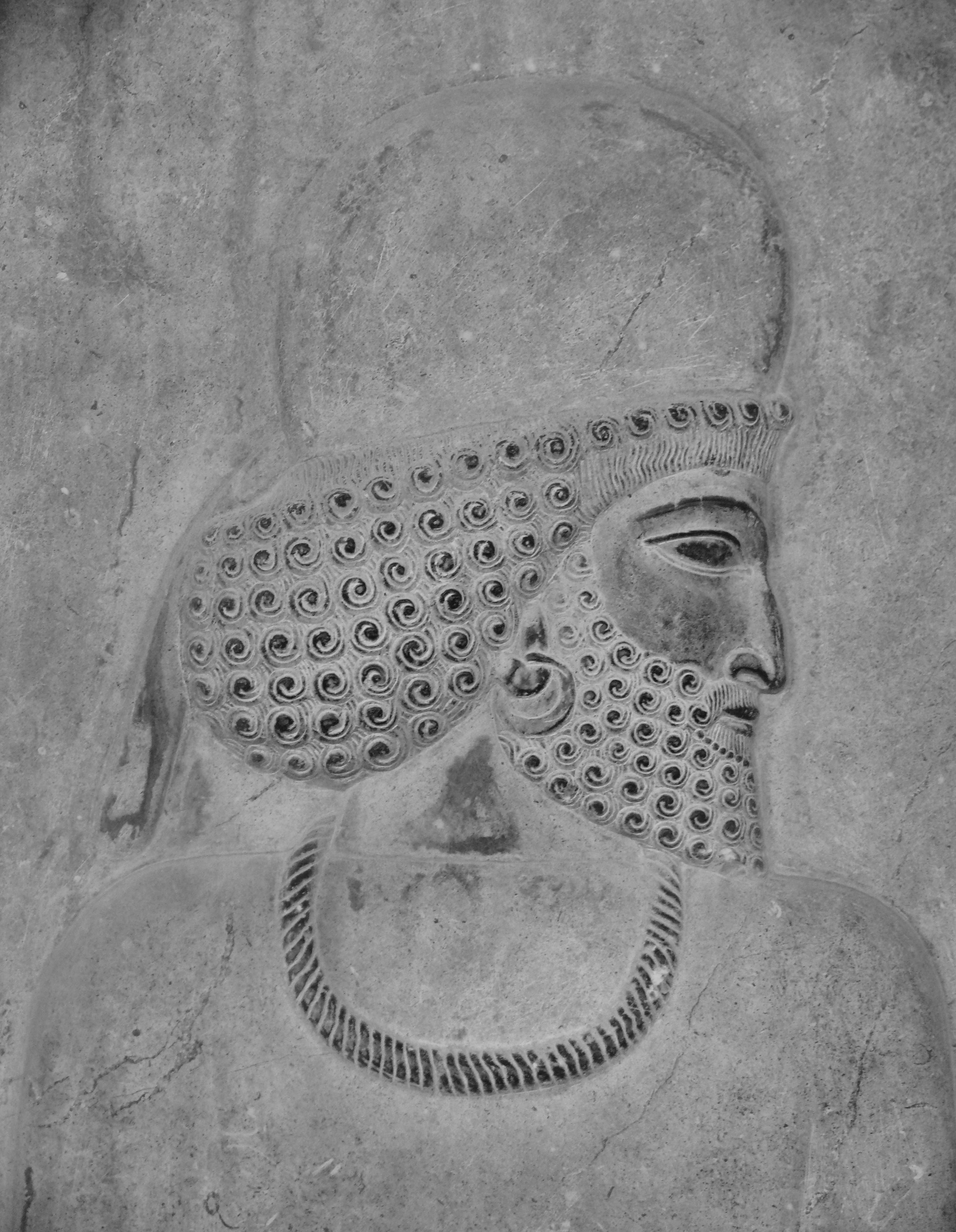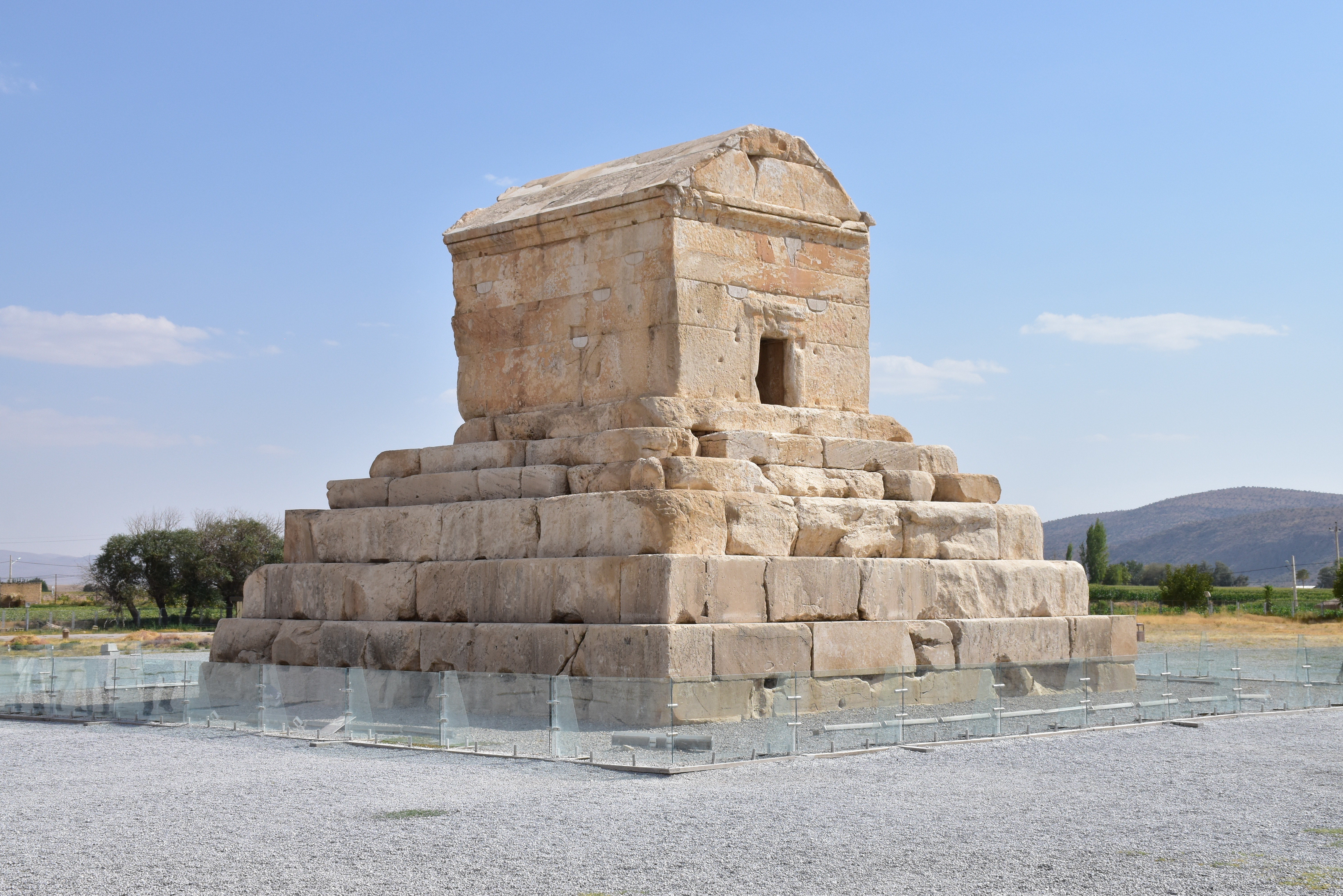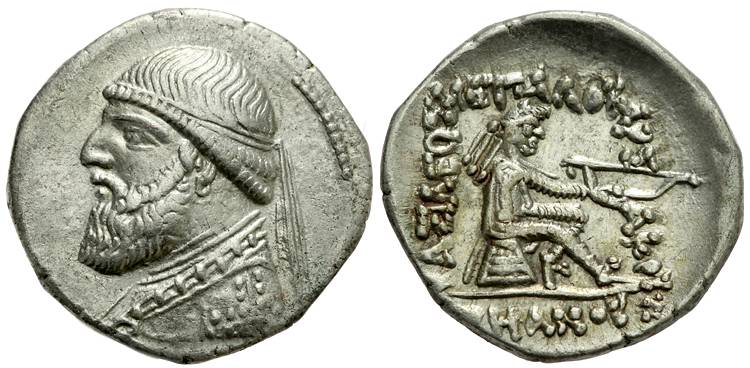|
Media (region)
Media (, Middle Persian: ''Mād'') is an Iron Age region of north-western Iran, best known for having been the political and cultural base of the Medes. During the Achaemenid period, it comprised present-day Iranian Azerbaijan, Iranian Kurdistan and western Tabaristan. As a satrapy under Achaemenid rule, it would eventually encompass a wider region, stretching to southern Dagestan in the north. However, after the wars of Alexander the Great, the northern parts were separated due to the Partition of Babylon and became known as ''Atropatene'', while the remaining region became known as ''Lesser Media''. History Under the Medes In 678 BC, Deioces united the Medes, Median tribes of Media and made the first Iran, Iranian Empire. His grandson Cyaxares managed to unite all Iranian peoples, Iranian tribes of History of Iran, Ancient Iran and made his empire a major power. When Cyaxares died he was succeeded by his son, Astyages, who was the last king of the Median Empire. Under the Ac ... [...More Info...] [...Related Items...] OR: [Wikipedia] [Google] [Baidu] |
Ecbatana
Ecbatana () was an ancient city, the capital of the Median kingdom, and the first capital in History of Iran, Iranian history. It later became the summer capital of the Achaemenid Empire, Achaemenid and Parthian Empire, Parthian empires.Nardo, Don. "Ecbatana." ''The Greenhaven Encyclopedia of Ancient Mesopotamia'', edited by Robert B. Kebric, Greenhaven Press, 2007, pp. 97-98. ''Gale In Context: World History'', link.gale.com/apps/doc/CX3205100129/WHIC?u=wylrc_uwyoming&sid=summon&xid=e9682d3c. Accessed 20 Nov. 2022. It was also an important city during the Seleucid Empire, Seleucid and Sasanian Empire, Sasanian empires. It is believed that Ecbatana is located in the Zagros Mountains, the east of central Mesopotamia, on Hagmatana Hill (Tappe-ye Hagmatāna). Ecbatana's strategic location and resources probably made it a popular site even before the 1st millennium BC. Along with Athens in Greece, Rome in Italy and Susa in Iran, Ecbatana is one of the few ancient cities in the world th ... [...More Info...] [...Related Items...] OR: [Wikipedia] [Google] [Baidu] |
Deioces
Deioces was the founder and the first king of the Median Kingdom, an ancient polity in western Asia. His name has been mentioned in different forms in various sources, including the ancient Greek historian Herodotus. The exact date of the era of Deioces' rule is not clear and probably covered most of the first half of the 7th century BC. According to Herodotus, Deioces was the first Median king to have gained independence from the Neo-Assyrian Empire and governed for 53 years. After Deioces' death, his son, Phraortes, succeeded him. Etymology Deioces' name has been mentioned in various forms in different sources. The Greek historian Herodotus has stated his name as Δηϊόκης (''Dēiokēs''). In Assyrian texts, he has been mentioned as ''Da-a-a-uk-ku;'' and in Elamite ones, as ''Da-a-(hi-)(ú-)uk-ka'' and ''Da-a-ya-u(k)-ka.'' Deioces' name is derived from the Iranian ''Dahyu-ka,'' and is the junior noun of the word ''dahyu-,'' meaning "the land". The old Iranian name Deio ... [...More Info...] [...Related Items...] OR: [Wikipedia] [Google] [Baidu] |
Darius II
Darius II ( ; ), also known by his given name Ochus ( ), was King of Kings of the Achaemenid Empire from 423 BC to 405 or 404 BC. Following the death of Artaxerxes I, in 424 BC or 423 BC, there was a struggle for power between his sons. The victor, Ochus, adopted the name Darius (Greek sources often call him Darius ''Nothos'', "Bastard"). His reign was marked by a series of revolts by various satraps and involvement in the Greek Peloponnesian War. It seems that Darius II was quite dependent on his wife Parysatis. In excerpts from Ctesias some harem intrigues are recorded, in which he played a disreputable part. The Elephantine papyri mention Darius II as a contemporary of the high priest Johanan of Ezra 6:10. Darius II is potentially mentioned in the books of Haggai, Zechariah, and Ezra–Nehemiah of the Hebrew Bible (the Christian Old Testament). There is some debate on whether these books refer to Darius the Great though. Rise to Power Texts from the Babylonian Muras ... [...More Info...] [...Related Items...] OR: [Wikipedia] [Google] [Baidu] |
Smerdis
Bardiya or Smerdis ( ; ; possibly died 522 BCE), also named as Tanyoxarces (; ) by Ctesias, was a son of Cyrus the Great and the younger brother of Cambyses II, both Persian kings. There are sharply divided views on his life. Bardiya either ruled the Achaemenid Empire for a few months in 522 BCE, or was impersonated by a magus called Gaumata ( ), whose name is given by Ctesias as Sphendadates (; ), until he was toppled by Darius the Great. Name and sources The prince's name is listed variously in the historical sources. In Darius the Great's Behistun inscription, his Persian name is Bardiya or Bardia. Herodotus calls him Smerdis, which is the prevalent Greek form of his name; the Persian name has been assimilated to the Greek (Asiatic) name ''Smerdis'' or ''Smerdies'', a name which also occurs in the poems of Alcaeus and Anacreon. Bardiya is called ''Tanyoxarces'' by Ctesias, who also names Gaumāta as ''Sphendadates'';Ctesias ''Persica'' 8 he is called ''Tanooxares'' ... [...More Info...] [...Related Items...] OR: [Wikipedia] [Google] [Baidu] |
Achaemenid Empire
The Achaemenid Empire or Achaemenian Empire, also known as the Persian Empire or First Persian Empire (; , , ), was an Iranian peoples, Iranian empire founded by Cyrus the Great of the Achaemenid dynasty in 550 BC. Based in modern-day Iran, it was the List of largest empires#Timeline of largest empires to date, largest empire by that point in history, spanning a total of . The empire spanned from the Balkans and ancient Egypt, Egypt in the west, most of West Asia, the majority of Central Asia to the northeast, and the Indus Basin, Indus Valley of South Asia to the southeast. Around the 7th century BC, the region of Persis in the southwestern portion of the Iranian plateau was settled by the Persians. From Persis, Cyrus rose and defeated the Medes, Median Empire as well as Lydia and the Neo-Babylonian Empire, marking the establishment of a new imperial polity under the Achaemenid dynasty. In the modern era, the Achaemenid Empire has been recognised for its imposition of a succ ... [...More Info...] [...Related Items...] OR: [Wikipedia] [Google] [Baidu] |
Satrap
A satrap () was a governor of the provinces of the ancient Median kingdom, Median and Achaemenid Empire, Persian (Achaemenid) Empires and in several of their successors, such as in the Sasanian Empire and the Hellenistic period, Hellenistic empires. A satrapy is the territory governed by a satrap. A satrap served as a viceroy to the king, though with considerable autonomy. The word came to suggest tyranny or ostentatious splendour, and its modern usage is a pejorative and refers to any subordinate or local ruler, usually with unfavourable connotations of corruption. Etymology The word is derived via Latin from Ancient Greek, Greek (), itself borrowed from an Old Iranian languages, Old Iranian . In Old Persian, which was the native language of the Achaemenids, it is recorded as (, literally "protector of the province"). The Median language, Median form is reconstructed as . Its Sanskrit cognate is (). The Biblical Hebrew form is , as found in Esther 3:12. In the Parthian l ... [...More Info...] [...Related Items...] OR: [Wikipedia] [Google] [Baidu] |
List Of Monarchs Of Persia
The monarchs of Iran ruled for over two and a half millennia, beginning as early as the 7th century BC and enduring until the 20th century AD. The earliest Iranian king is generally considered to have been either Deioces of the Median dynasty () or Cyrus the Great of the Achaemenid dynasty (550–330 BC). The last Iranian king was Mohammad Reza Pahlavi of the Pahlavi dynasty (1925–1979), which was overthrown by the Islamic Revolution. Since then, Iran has been governed as an Islamic republic#Iran, Islamic republic. In classical antiquity, Iran reached the peak of its power and prestige under the Achaemenid Empire, which stretched from Achaemenid Egypt, Egypt and parts of Southeast Europe in the west to the Achaemenid conquest of the Indus Valley, Indus Valley and parts of Central Asia in the east. By 323 BC, the Achaemenid Empire's territories had been conquered by the Macedonian Empire during the Wars of Alexander the Great, bringing Iran into the Hellenistic period, Hellenist ... [...More Info...] [...Related Items...] OR: [Wikipedia] [Google] [Baidu] |
Cyrus The Great
Cyrus II of Persia ( ; 530 BC), commonly known as Cyrus the Great, was the founder of the Achaemenid Empire. Achaemenid dynasty (i. The clan and dynasty) Hailing from Persis, he brought the Achaemenid dynasty to power by defeating the Median Empire and embracing all of the previous civilized states of the ancient Near East, expanding vastly across most of West Asia and much of Central Asia to create what would soon become the List of largest empires#Timeline of largest empires at the time, largest empire in history at the time. The Achaemenid Empire's greatest territorial extent was achieved under Darius the Great, whose rule stretched from Southeast Europe in the west to the Indus Valley in the east. After absorbing the Median Empire, Cyrus conquered Lydia and eventually the Neo-Babylonian Empire, granting him control of Anatolia and the Fertile Crescent, respectively. He also led a major expedition into Central Asia, where his army brought "into subjection every nation wit ... [...More Info...] [...Related Items...] OR: [Wikipedia] [Google] [Baidu] |
Persepolis The Persian Soldiers
Persepolis (; ; ) was the ceremonial capital of the Achaemenid Empire (). It is situated in the plains of Marvdasht, encircled by the southern Zagros mountains, Fars province of Iran. It is one of the key Iranian cultural heritage sites and a UNESCO World Heritage Site. The earliest remains of Persepolis date back to 515 BC. The city, acting as a major center for the empire, housed a palace complex and citadel designed to serve as the focal point for governance and ceremonial activities. It exemplifies the Achaemenid architecture, Achaemenid style of architecture. The complex was taken by the army of Alexander the Great in 330 BC, and soon after, its wooden parts were completely destroyed by fire, likely deliberately. The function of Persepolis remains unclear. It was not one of the largest cities in ancient Iran, let alone the rest of the empire, but appears to have been a grand ceremonial complex that was only occupied seasonally; the complex was raised high on a walled plat ... [...More Info...] [...Related Items...] OR: [Wikipedia] [Google] [Baidu] |
Hamadan (Iran) Relief Achamenid Period
Hamadan ( ; , ) is a mountainous city in western Iran. It is located in the Central District of Hamadan County in Hamadan province, serving as the capital of the province, county, and district. As of the 2016 Iranian census, it had a population of 554,406 people in 174,731 households. Hamadan is believed to be among the oldest Iranian cities. It was referred to in classical sources as Ecbatana (Old Persian ). It is possible that it was occupied by the Assyrians in 1100BCE; the Ancient Greek historian, Herodotus, states that it was the capital of the Medes, around 700BCE. Hamadan is situated in a green mountainous area in the foothills of the 3,574-meter Alvand Mountain, in midwestern Iran. The city is 1,850meters above sea level. It is located approximately southwest of Tehran. The old city and its historic sites attract tourists during the summer. The major sights of this city are the Ganj Nameh inscription, the Avicenna monument and the Baba Taher monument. The main l ... [...More Info...] [...Related Items...] OR: [Wikipedia] [Google] [Baidu] |
Median Empire
Media ( Old Persian: ''Māda''; Greek: ''Mēdía''; Akkadian: '' Mādāya'') was a political entity centered in Ecbatana that existed from the 7th century BCE until the mid-6th century BCE and is believed to have dominated a significant portion of the Iranian plateau, preceding the powerful Achaemenid Empire. The frequent interference of the Assyrians in the Zagros region led to the process of unifying the Median tribes. By 612 BCE, the Medes became strong enough to overthrow the declining Assyrian empire in alliance with the Babylonians. However, contemporary scholarship tends to be skeptical about the existence of a united Median kingdom or state, at least for most of the 7th century BCE. According to classical historiography, Media emerged as one major power of the ancient Near East after the collapse of Assyria. Under Cyaxares (r. 625–585 BCE), the kingdom's borders were expanded to the east and west through the subjugation of neighboring peoples, such as the Pe ... [...More Info...] [...Related Items...] OR: [Wikipedia] [Google] [Baidu] |
Astyages
Astyages was the last king of the Median kingdom, reigning from 585 to 550 BCE. The son of Cyaxares, he was dethroned by the Persian king Cyrus the Great. Reign Astyages succeeded his father in 585 BCE, following the Battle of Halys, which ended a five-year war between the Lydians and the Medes. He inherited a large empire, ruled in alliance with his two brothers-in-law, Croesus of Lydia and Nebuchadnezzar of Babylon, whose wife, Amytis, Astyages' sister, was the queen for whom Nebuchadnezzar was said to have built the Hanging Gardens of Babylon. Married to Aryenis, the sister of the Lydian king Croesus, to seal the treaty between the two empires, Astyages ascended to the Median throne upon his father's death later that year. The ancient sources report almost nothing about Astyages’ reign, and a final judgment on his character is not possible, since Herodotus’ negative account (Astyages is represented as a cruel and despotic ruler) and Ctesias’ favorable one, are ... [...More Info...] [...Related Items...] OR: [Wikipedia] [Google] [Baidu] |











